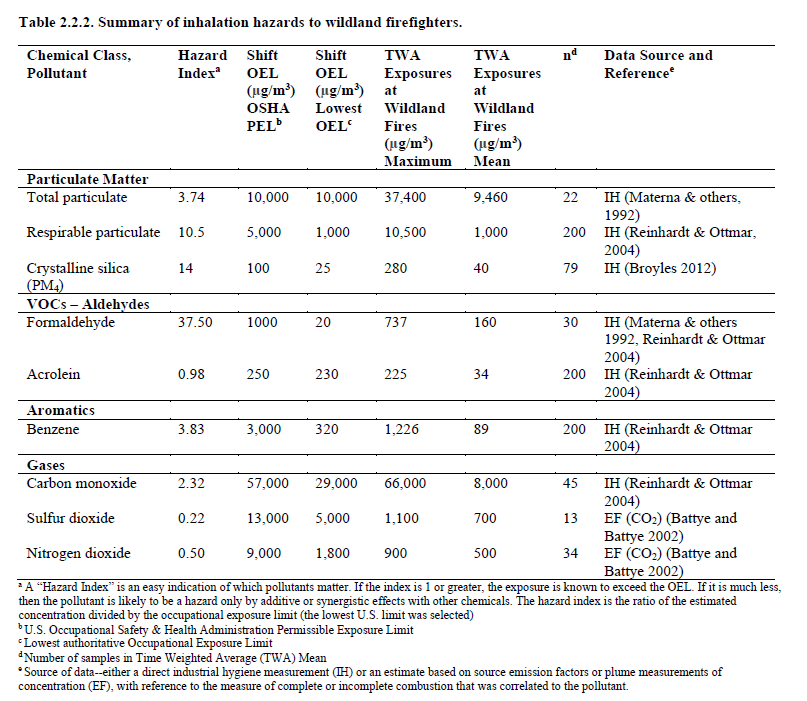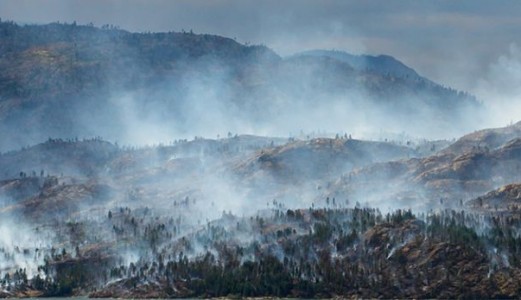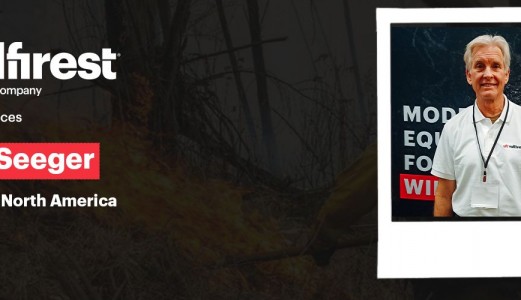What kind of pollulants are on Wildfire Smoke?
Living and dead vegetation are the components of wildland fuels, and smoke is the result of the burning of this fuel. This wildfire smoke is characterized by its complex mixture of water vapor, particulate pollution, carbon monoxide, carbon dioxide, hydrocarbons along with other organic chemicals, nitrogen oxides, trace minerals and various gases such as the acrolein, formaldehyde, nitrogen dioxide and sulfur dioxide. The wildland fire smoke contains other components as well such as polycyclic aromatic hydrocarbons (PAH), which is thought to be carcinogenic, and airborne soil dust which may contain respirable crystalline silica. Each wildfire smoke's exact composition depends on many factors, mainly the fuel type and moisture content, the fire temperature, weather-related influences and wind conditions among other variables.
How do this hazards affect firefighters health?
The main pollutant of concern resulting from wildland fire smokes is what is the Particulate matter. Their size is an indicator of their potential for causing health problems.
In a recent study of The National Wildfire Coordination Group entitled Smoke Management Guide for Prescribed Fire affirms that: “The human body has several ways to protect itself from particulate matter associated with wildland fire smoke: The larger particles (>2.5 μm in diameter) and a portion of the fine (<2.5 μm in diameter) and ultra-fine (< 1 μm in diameter) particles will be captured in the mucous that covers nasal hairs and cilia (microscopic hairs lining the respiratory tract which help to remove dust and bacteria) within the body’s airways.”
The study underlines the fact that: “The mucous and captured particles will eventually leave the airway through coughing or swallowing. The portion of fine and ultra-fine particles not captured by the mucous will continue to travel deeper into the body and will eventually be deposited on the lining of the lung where they can become trapped. If the person is in a clean atmosphere, the body will eventually cleanse itself by incorporating the particles in mucus where they will leave the body through coughing or swallowing. The ultra-fine particles can travel through the lining of the lung and enter the bloodstream. White blood cells eventually will remove the foreign material from the bloodstream.”
We can understand from this research that the nano particles PM 2.5 (less than 2.5 micrometers in diameter) are in fact the greatest risk to our health since they can penetrate human lungs, and some of them can even travel through our bloodstream. The study warns us about the exposure to such particles that could harm our lungs, heart and blood vessels.
On the other hand, bigger particles (larger than 10 micrometers in diameter) are less dangerous, but they are not totally harmless. Those larger particles have the ability to irritate eyes, nose, and throat.
It’s important to note that most of the particles in wildfire smokes are less than 0.6 micrometers in diameter. Whereas in the case of wildland firefighters, all particles less or equal to 4 μm (PM4) can penetrate to the lower airways.
|
Some health effects linked to short-term (acute) PM exposure:
Some health effects linked to long-term (chronic) PM exposure:
|
Many other pollutants might be dangerous in smoke events such as the carbon monoxide. The main characteristic of this pollutant is the fact that it is a colorless, odorless gas produced by incomplete combustion of wood or other organic materials. The inhalation of the carbon monoxide causes severe health effects ranging from diminished work capacity and a loss of visual perception, manual dexterity, driving performance, and attention level, up to headache and nausea. Nonetheless, more serious effects at very high levels may occur in very close proximity to a smoldering fire. For individuals suffering from preexisting heart diseases, it can even trigger an angina attack, increase abnormal heartbeats, and potentially lead to sudden heart failure.
Carbon monoxide transforms the oxygen from hemoglobin in the blood to carboxyhemoglobin (COHb), which affects major and vital organs like the brain and the heart that require large amounts of oxygen to function properly. The above mentioned research states that: “When people are exposed to CO, the time until they reach a toxic level of COHb can be predicted as a function of CO concentration, breathing rate, altitude, and other factors .The harder the work and the higher the altitude, the more rapidly COHb forms at a given concentration of CO. In heavy smoke where there is a high level of CO, symptoms of overexposure to CO can occur during hard physical labor after 15 minutes.”
The two most dangerous aldehydes found in wildland fire smoke that cause adverse health effects are Formaldehyde and acrolein. Severe health effects include eye, nose and throat irritation, depression of breathing rates, and temporary paralysis of cilia. Acrolein is especially irritating to the eyes and mucous membranes at very low concentrations. Whereas, nasal cancer can result from a chronic exposure to formaldehyde.
Moreover, Oxides of nitrogen (NOx) and sulfur (SOx) affects the eyes, mucous membranes and respiratory tract. They might trigger breathing difficulties and asthma. Luckily, those two components do not reach high levels in smoke. However, they are likely to add to the respiratory irritant burden that firefighters face and likely contribute to respiratory problems during brief periods of high smoke exposure.
Benzene and other volatile organic compounds (VOCs). Even though there is no supporting evidence of how much wildland firefighters are exposed to benzene, which is a well-known carcinogen implicated in leukemia. Future research in different fuel types would help to shed the light on the discrepancies. The highest exposure levels were found from the combustion of gasoline products, including drip torch fuel and exhaust from internal-combustion engines.
How much exposure do wildland firefighters get?
The Occupational Safety and Health Administration (OSHA, the main federal U.S. Agency charged with enforcing safety and health legislation), established a framework, analyzing the main pollutants in forest fire smoke and drawing a maximum exposure index (OEL). If the index is equal or bigger than 1, the exposure is known to exceed the OEL. If it is lesser than 1, then the pollutant is likely to be a hazard only by additive or synergistic effects with other chemicals.

The OSHA establishes that 10-12 hours of continuous work should not be exceeded in prescribed extinguishing or burning tasks. Even respecting these parameters, researchers have established that carbon monoxide exposure can exceed OELs at both prescribed fires and wildfires. It is not uncommon to find that firefighters are exposed to too much CO, 5 to 10 percent of the time over the course of an average work shift. Exposure to PM4 can also significantly exceed currently-recommended OELs at both prescribed fires and wildfires.
Which maneuvers or positions imply a greater risk of exposure?
Direct attack and holding line have the highest smoke exposures. Sawyers appear to have the next highest potential for smoke and exhaust exposure followed by mop-up with lighting usually having the lowest exposures.
Uphill and downwind smoke exposure is worse. When a fire management task requires the firefighter to be either uphill or downwind of the fire, increasing ambient wind speed is associated with increasing smoke exposure.
Do you know how to protect yourself from wildfire smoke hazards?
Don’t miss this interview on Respiratory Protection Devices for Wildland Firefighters.






